New Paper on Kisor, Stare Decisis, and Administrability
Several years ago, Andrew Hammond and I set out to read and code every lower-court decision that invoked Kisor v. Wilkie when applying Auer deference to agencies’ interpretations of their own regulations. We read around 1,000 cases, all that were issued in the first five years after Kisor was decided (2019-2024). This project looked promising in 2021 (similar to my prior study with Kent Barnett of Chevron deference in the circuit courts). But when we were close to wrapping up coding, the Supreme Court issued Loper Bright Enterprises v. Raimondo, which eliminated Chevron deference and likely spells the end of Auer deference in the near future. So we had to go back to our findings and figure out how they could be helpful in a world without Kisor or Auer.
Against that backdrop, we just posted to SSRN a draft of the first paper from this project, entitled Stare Decisis and the Missing Administrability Inquiry. Here is the abstract:
Administrative law is undergoing a tremendous amount of change. Presidential administrations have abandoned long-held practices and embraced new strategies to make policy through adjudication and regulation. Meanwhile, the Supreme Court has reworked foundational principles of federal administrative law including agency independence, adjudication, and legal interpretation. What does the pace and degree of change in administrative law mean for the federal courts? We posit that some answers lie in the Supreme Court’s decision in Kisor v. Wilkie and its application in the lower courts over the last five years.
In Kisor v. Wilkie, the Court was asked to reconsider its longstanding precedents concerning judicial deference to federal agencies’ interpretations of their own regulations. The result was a splintered decision that produced more questions than answers. Justice Kagan, writing for the plurality (and in parts, the Court), reaffirmed those precedents, including Auer and Seminole Rock, but also clarified and expanded the ways in which such deference should be constrained. Justice Gorsuch penned the principal opposing opinion, arguing that the Court should abandon Auer deference entirely. Chief Justice Roberts cast the deciding vote based on stare decisis, suggesting that “the distance between the majority and Justice Gorsuch is not as great as it may initially appear.” Justice Kavanaugh, also writing separately, predicted that under the Court’s new approach to Auer deference, courts will almost always afford no deference to an agency regulatory interpretation. Scholars and commentators have debated the impact Kisor will have on Auer deference going forward.
This Article seeks to shed some empirical light on Kisor’s impact and what it means for the future of administrative law. In this Article, we present the findings of our review of every published decision in federal and state courts that cite Kisor—nearly 1,000 judicial decisions—to better understand how the decision has affected judicial deference of agency legal interpretation on the ground. We find, perhaps unsurprisingly, that lower courts have struggled to apply Auer deference in a consistent fashion after Kisor and that courts seem more likely to embrace Justice Kavanaugh’s approach than Justice Kagan’s. These findings illustrate the challenges of effectuating change in administrative law through the hierarchical structure of the federal judiciary. When overturning precedent, courts and litigants pay substantial attention to whether the current doctrine is workable. But judges and lawyers often ignore whether and how the replacement doctrine will be administrable. Following the Supreme Court’s decisions in Loper Bright, Jarkesy, and Corner Post, much more attention should be paid to how such reforms will be implemented by the lower courts and in the regulatory trenches. Courts, litigants, and scholars should explore how to make the new administrative law doctrine more administrable.
You can download the current draft here. Next week we’ll post a draft of a shorter essay from this project that explores the theoretical implications of Justice Kagan’s opinions in Kisor and Consumers’ Research as well as her dissent in Loper Bright.



